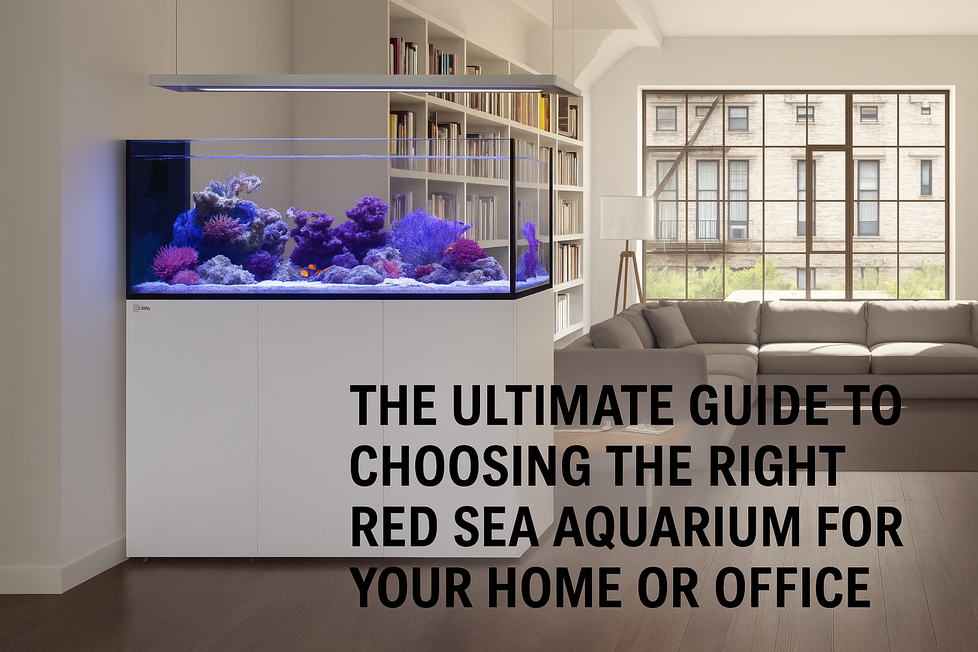How to Prevent Overheating and Keep Your Fish, Plants & Corals Safe
Maintaining stable water temperature is crucial in both freshwater and marine aquariums. While heating is essential in colder months, overheating is just as dangerous, especially during summer or when using high-output lighting and equipment. Elevated temperatures can stress or even kill fish, damage plants, and bleach corals.
This guide explores effective, safe, and efficient methods for cooling your aquarium, from fans and chillers to practical tips for heat management.
Why Aquarium Cooling Is Important
Overheating may lead to:
• Reduced oxygen levels
• Increased fish stress and metabolic rates
• Coral bleaching in reef tanks
• Algae blooms in planted aquariums
• Temperature swings that harm sensitive species
Ideal Temperature Ranges:
| Aquarium Type | Recommended Temperature Range |
|---|---|
| Freshwater Tropical | 24–27°C (75–81°F) |
| Marine (Fish-Only) | 24–26°C (75–79°F) |
| Marine Reef (SPS/LPS) | 24–25.5°C (75–78°F) |
| Coldwater Fish | 18–22°C (64–72°F) |
1. Use Aquarium Cooling Fans
How It Works:
Fans increase evaporation at the water surface, which helps lower the water temperature by 1–3°C.
Best For:
• Nano aquariums
• Planted tanks
• Open-top marine tanks
Benefits:
• Inexpensive
• Easy to install
• Low power usage
Tips:
• Use with a temperature controller for precision
• Direct airflow across the surface, not into the tank
• Monitor water levels—evaporation increases top-off needs
2. Install an Aquarium Chiller
How It Works:
Chillers use a refrigeration unit to cool the water via a closed-loop system or direct line from your sump or external filter.
Best For:
• Large aquariums (200L+)
• Reef tanks with SPS/LPS corals
• Sensitive livestock (Axolotls, Discus, invertebrates)
Benefits:
• Precise temperature control
• Fully automated
• Essential in environments with poor ventilation or consistent heat
Considerations:
• Requires space and proper ventilation
• Higher upfront cost, but worth it for stability
• Works best with external filtration or sump systems
3. Reduce Lighting Heat Output
Lighting contributes significantly to overheating, especially in marine or aquascaped setups using:
• High-intensity LEDs
• Metal halides
• Long photoperiods
Tips to reduce lighting heat:
• Raise the light above the tank
• Use LED fixtures with cooling fans
• Limit photoperiod to 6–8 hours during heatwaves
• Install a ramp-up/ramp-down schedule to reduce heat spikes
4. Optimise Room Conditions
Your aquarium reacts to room temperature, so keeping the space cool helps reduce tank heat.
Simple adjustments:
• Close blinds during sunny hours
• Use a ceiling or floor fan near the tank
• Ensure good airflow around the tank and hood
• Install air conditioning in extreme cases
5. Emergency Cooling Tricks
If your tank suddenly overheats and you don’t have a fan or chiller yet, try these:
• Float a sealed ice pack or bottle of dechlorinated water (never add ice directly)
• Do a small water change with cooler (but not cold) water
• Turn off heat-producing devices like pumps or lights temporarily
• Keep the lid open and use a desk fan to boost evaporation
⚠️ Caution: Never drop the temperature too quickly—rapid changes can shock your livestock.
Use a Reliable Thermometer or Temperature Controller
No matter what method you use, always monitor your water temperature. Pair your cooler or fan with a digital temperature controller to automate on/off cycles and avoid overcooling.
Look for models that:
• Allow custom temperature ranges
• Include dual heating/cooling outlets
• Feature audible alarms or app alerts
Cooling Products You’ll Find at Charterhouse Aquatics
• Cooling Fans: Compact, clip-on models from trusted brands
• Thermostatic Controllers: Digital options with high/low cutoffs
• Aquarium Chillers: From Teco, D-D, Aqua Medic & more
• Inline Cooling Kits: Perfect for sumps or canister filter users


